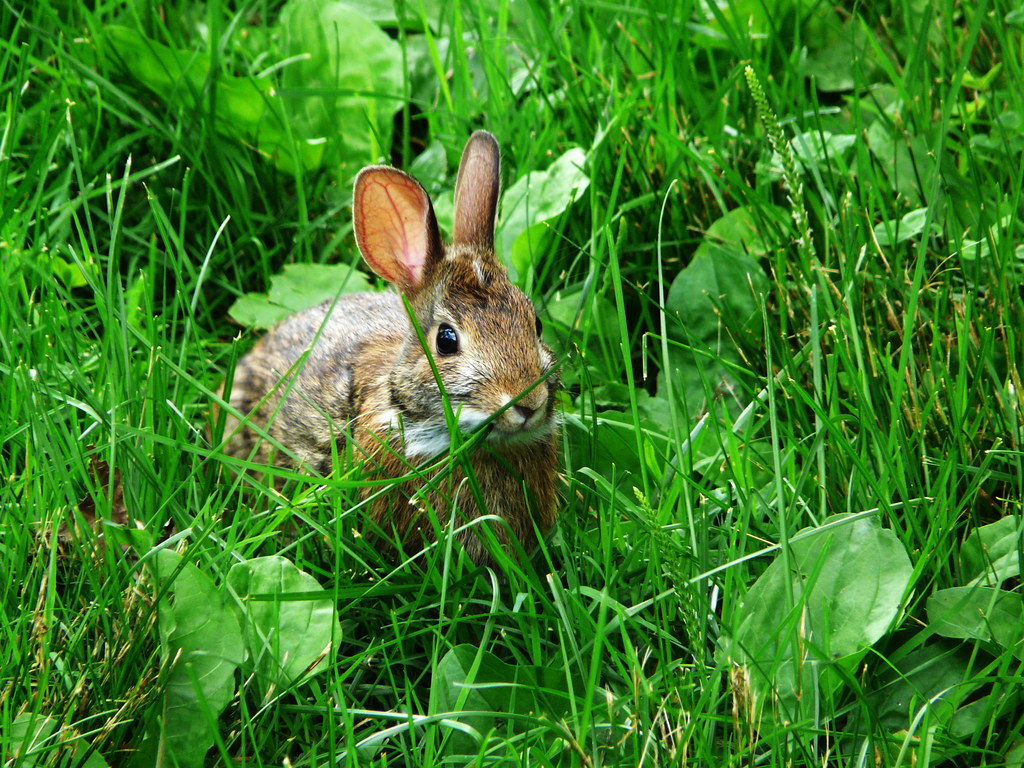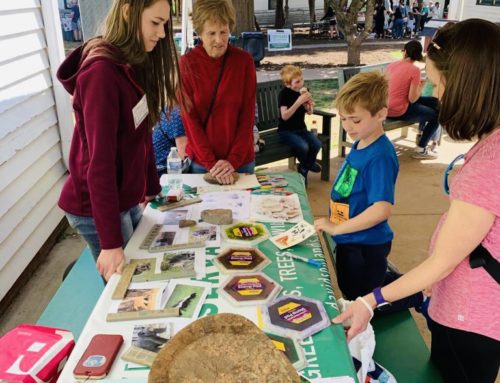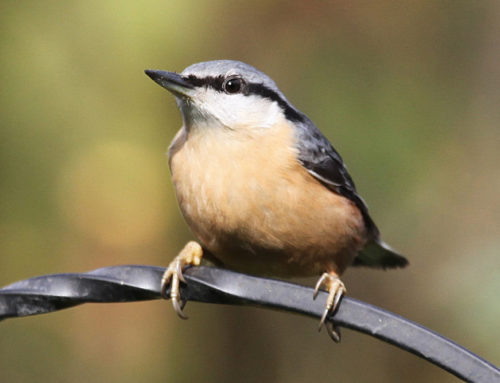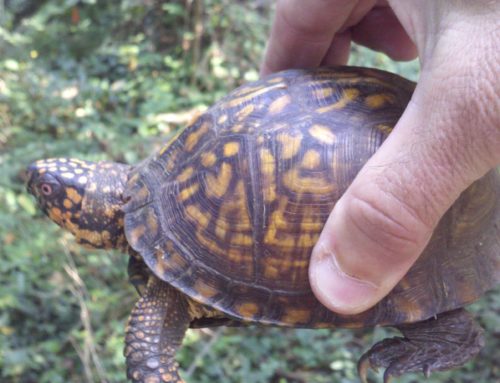The eastern cottontail rabbit is a very common mammal in North Carolina and in most of the Eastern U.S. You probably have seen them dashing off into a thicket. They have brown upper parts, large ears, and a fuzzy white cotton-ball-like tail. They like to live in grassy fields with shrubs or thickets nearby for cover. They have a very high reproductive rate. Breeding begins in January or February and continues through September. They are able to have up to seven litters per season and litters may have 3-5 young. Females born early in the year may produce a litter by late Summer or Fall. No wonder this species is associated with fertility. So, you might ask, why aren’t we just overrun with rabbits? That is because the cottontail rabbit is the most preyed upon species. They are food for cats, dogs, foxes, coyote, bobcat, weasels, raccoon, mink, owls, hawks, corvids, snakes, and humans. Because of predators they are very alert and have large ears and eyes. They tend to stay close to cover.
Cottontails bed down in depressions in the ground called forms. These are usually under a thicket. They line the form with fur and soft grass when they have their young.
Cottontails are herbivorous. They eat grass, plants in the bean and aster families, and grains. In the winter they may strip bark from shrubs and saplings to get at the soft cambium layer. One way you can tell if it’s a rabbit that is eating your garden is that they make a clean 45 degree angle cut when eating herbaceous plants unlike deer which leave plants looking tattered or squared off. If you are seeing pellets or scat the deer pellets are elongated and tend to be dropped in a pile while rabbit pellets are round and usually dropped one at a time.
So, as spring approaches keep your eyes open for cottontail rabbits. They are fun to watch even if they are eating my bean patch.










Leave A Comment